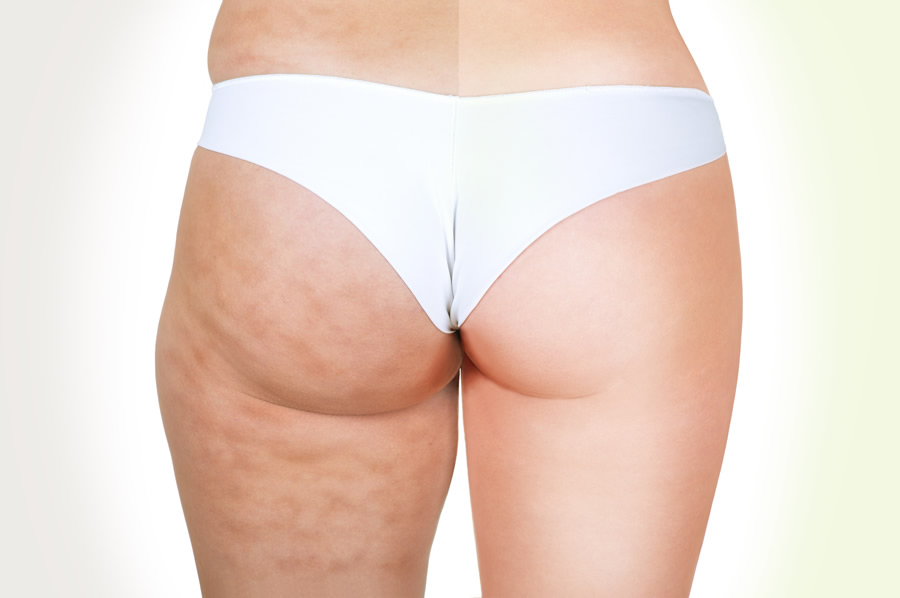Skin Lightening for Intimate areas

Darkening of the skin or hyperpigmentation in our most intimate areas can negatively affect our physical and emotional well-being. It is no surprise that more individuals are seeking out treatments to correct hyperpigmentation in the intimate area. Fortunately, the innovation of the Dermamelan Intimate has made this possible and can improve stubborn pigmentation with excellent results in patients of all skin types and skin tones. One of the first dermatologist to incorporate Dermamelan Intimate into her private NYC dermatology practice is board certified dermatologist, Dr. Michele Green. Dr. Green has over 25 years of experience in skin lightening and has worked with a diverse clientele to help them achieve skin that is even in skin tone and texture. If you are interested in skin lightening procedures for intimate areas of your body, Dr. Green is here to help.
Hyperpigmentation in the intimate regions of the body is often multifactorial and can be a result of aging, genetic predisposition, hormonal changes, or external factors such as depilation or tight clothes. Some of the most popular areas that patients consult Dr. Green for skin lightening treatments include the vagina and inner thighs. Vaginal skin bleaching to lighten hyperpigmentation in the intimate area has been common in Europe and the Middle East for many years. The process of vaginal skin lightening of the vulva, perianal area, and inner thighs has been an area of increasing popular treatment in the United States. Many patients, regardless of ethnicity, tend to develop areas of hyperpigmentation including the face, neck, chest, armpits, buttocks, and back. This pigmentation is especially common in patients with darker skin tones and Dermamelan Intimate was designed to meet this need. The intimate area is the latest, most requested area, that patients are requesting skin lightening.
Dr. Michele Green is a world renowned specialist in corrective pigmentation treatment and in Cosmelan, Mesopeels, and Dermamelan Intimate treatment. She is one of the only dermatologists in New York City who treats patients of all skin tones who are suffering from hyperpigmentation of the intimate areas with Dermamelan Intimate. The Dermamelan depigmentation system is an outstanding skin lightening treatment and one that Dr. Green utilizes frequently in her private NYC dermatology office. Dermamelan can be used on all skin types and is safe and effective for removing unwanted pigmentation in the genital-perineal area, perianal area, mons pubis, and inner thighs and groins. If you are suffering from hyperpigmentation in these intimate areas, it’s time to schedule a consultation with Dr. Michele Green in New York.
Dermamelan intimate to treat hyperpigmentation
One of the truly revolutionary methods developed by Mesoestetics, the makers of Cosmelan to treat facial melasma, is Dermamelan Intimate to reduce pigmentation in the external genital area, groin, and inner thighs. 70% of women have unwanted body hair removed, many through laser hair removal. The most common area to remove unwanted hair in women is in the intimate or vaginal area. Since this private area is of cosmetic concern for many women, it is not surprising that this intimate area has an increased demand for depigmentation and anti-aging treatments.
The aging process in the genital-perineal area and adjacent areas takes place in the same way as the rest of the body. With aging, there is a loss of collagen and elastin, and firmness of the skin. Another effect of aging is hyperpigmentation or darkening of the skin, including the skin around the external genital and inner thigh area. This hyperpigmention is a result of aging, genetic predisposition, and hormonal changes. Individuals with type IV phototype or darker, have an increased prevalance of hyperpigmentation. The increase in estrogen activity also stimulates an increase in tyrosinase which increases melanin production, and leads to excess hyperpigmentation.
There are also external factors which cause this intimate area to darken. These external factors include dry skin, certain medications, hormonal imbalance, friction, or frequent use of tight pants and underwear. All of these external factors can cause the inner thighs to darken. Another common reason for skin darkening is hair removal by waxing or resulting folliculitis, which can cause an inflammatory reaction which causes the skin to darken and produce an increased amount of melanin production.

Which areas does Mesoestetic Dermamelan Intimate treat?
The newest method to correct the pigmentation and improve the skin quality of the skin in the intimate area, is the Mesoestetic Dermamelan Intimate treatment. This treatment combines depigmentation action and anti-aging effects all in one single treatment. The result is an improvement in both skin discoloration and skin turgor. The Dermamelan Intimate treatment treats the following private areas:
- Genital-perineal area
- Perianal area
- Mons pubis
- Inner thighs
- Groin
- Buttocks
- Inner thighs
The treatment consists of two phases. Phase 1 is the in office intensive depigmentation peel which is performed by Dr. Green in one single clinical session. Phase 2 is the regulation of hyperpigmentation, which consists of using the Dermamelan Intimate home depigmenting gel cream on a daily basis. The synergistic effects of combining both phases is what gives such great results.
Hyperpigmentation in the intimate area
There are many factors that can impact the development of intimate hyperpigmentation. In general, as we age, the intimate area may darken, which can be linked to hormonal changes. The skin’s melanocytes, which are the cells responsible for forming melanin, the pigment that gives color to our skin, can increase. During puberty, pregnancy, or general aging, estrogen fluctuations can cause increased amounts of pigmentation to form in certain areas such as the vaginal area, anal area, and inner thighs. It is this hyperpigmentation which Dermamelan Intimate addresses. Another factor which contributes to hyperpigmentation is friction and inflammation. Friction, as a result of rubbing or trauma can cause melanocyte hyperactivity, leading to thicker and darker skin in those areas. Shaving and certain hair removal products can also trigger melanocyte hyperactivity and cause hyperpigmentation of the skin. In addition, darkening in your intimate areas is also common with age.
There are some triggers that can be avoided to minimize darkening. These include letting your skin become dry or irritated, avoiding tight-fitting clothing and underwear, and avoiding hair removal methods that can cause folliculitis and inflammation. One common cause of skin darkening in the intimate regions is shaving. If possible, try to stop shaving but if you can’t, always make sure to use a shaving oil and exfoliate afterwards to prevent ingrown hair and the risk of discoloration and hyperpigmentation. However, once your intimate areas have darkened, they are likely to remain that way or even become darker over time. In that case, Dermamelan Intimate is one of the safest and most effective ways to remove the hyperpigmentation in your intimate areas.
What is the procedure of Dermamelan Intimate?
The Dermamelan Intimate consists of two phases that each have several steps. The first phase is done in the office by board-certified dermatologist Dr. Michele Green and includes the following steps:
- Step 1: Apply mesolips protector to protect the mucous membrane and labia minora and to avoid migration of the solution.
- Step 2: Apply Dermamelan Intimate peeling evenly to the treatment area(s) with a swab. Several layers may be applied and left on for 7 minutes to maximize results.
- Step 3: Remove the product and apply post-neutralizing spray. Any residue is removed with a wet gauze and dried gently.
- Step 4: Apply Dermamelan Intimate Mask over treatment area.
- Step 5: Place occlusive film over the area to facilitate action of the active ingredients and to prevent product migration. This must be kept on for two hours.
The second phase of the Dermamelan Intimate procedure is an at home application regimen. After two hours have elapsed since the Dermamelan Intimate mask and occlusive film were placed, you can wash it off with lukewarm water and an intimate cleansing gel to ensure complete removal of the product. The post-procedure crystal fiber intimate mask is placed over the treatment area for 10 to 15 minutes. 48 hours after the placement of the original Dermamelan Intimate mask at the office, one applications of the Dermamelan Intimate home depigmenting gel cream should be applied each night to the treatment area for 3 months.

How is the depigmenting gel cream used?
Intimate hyperpigmentation often occurs gradually and has many contributing factors from accumulated skin trauma to puberty to pregnancy to friction and more. Therefore, it is not going to magically disappear overnight. Although the in-office Dermamelan Intimate peel is highly effective, it needs to be paired with an at-home depigmenting gel cream to continuously reduce the hyperpigmentation and to ensure optimal results. Many patients will see some initial skin lightening a week after the Dermamelan Intimate peel done by Dr. Green and continued improvement in the first month with consistent home depigmenting gel cream applications. After three months of the at-home depigmentation protocol, there should be significant improvement in intimate hyperpigmentation.
The Dermamelan Intimate home depigmenting gel cream should be applied once or twice a day to the area that was treated whether it be the genital-perineal area or inner thighs. It will work to reduce this hyperpigmentation and skin discoloration with superior regulating action. The Dermamelan Intimate depigmenting gel cream contains ingredients like niacinamide, potassium azeloyl diglycinate, tranexamic acid, phytic acid, salicylic acid, kojic acid, and glycyrrhiza glabra root extract to actively prevent further hyperpigmentation while improving the appearance of existing dark spots. The depigmenting gel cream should be used at bedtime on the treated area for 90 days to treat the area of hyperpigmentation. The depigmenting gel cream has several functions which includes:
- Improving the barrier function of the vulvar epithelium
- Strengthening and increasing the skin’s elasticity, tone, and turgor
- Decreasing genital and perennial hyperpigmentation
- Protecting and moisturizing the vulvar epithelium
What is in the Dermamelan Intimate pack?
The Dermamelan Intimate Pack is a kit provided by Mesoestetic with all the necessary products to perform the Dermamelan Intimate depigmentation method. It contains depigmenting products that were specifically designed for the genitourinary-perianal area, mons pubis, inner thighs and groin area. It contains a Dermamelan Intimate peel, post-peel neutralizing spray, Dermamelan Intimate mask, and occlusive film. The proper application and usage of the kit will ensure lightening of your intimate regions within a matter months.
How successful is the Dermamelan Intimate treatment?
The Dermamelan Intimate treatment is successful with the proper application and with strict adherence to the at-home depigmentation protocol. Many patients will see improvement in the first month with consistent home depigmenting gel cream applications. After two to three months of the at-home depigmentation protocol, there should be even greater improvement in intimate hyperpigmentation. For increased skin lightening results, the peel can be repeated after three to six months.
Is it possible to lighten dark underarms and groin?
The axillae (underarms) and the groin (bikini area) is an area of cosmetic concern for many of our patients. It is now possible to bleach and whiten the dark underarm area. Through a process involving the mesopeel (TM), Dr. Green can lighten the hyperpigmented, discolored areas of your underarms and bikini area. A series of 4 to 6 chemical peels with Mesopeel melanostop tran3x combined with the at home depigmenting gel cream are required. The mesopeel is a depigmenting formula that is composed of:
- 20% azelaic acid
- 10% resorcinol
- 6% phytic acid
- 3% tranexamic acid
This skin lightening peel accelerates the skin’s epidermal renewal and aids in removal of melanin in the epidermal layers of the skin. There are no hydroquinones in this formulation, so there is little chance of irritation in this sensitive area. Tranexamic acid inhibits the tyrosinase enzyme, which will serve to reduce the proliferation of melanocytes and its vascularization, which cause hyperpigmentation. This mesopeel can only be performed by a board certified dermatologist, like Dr. Green, who is an expert in skin lightening and pigmentation.
Can I lighten dark spots of my body as well?
Yes, Dr. Green is able to use the mesopeel and other trichloroacetic acid peels to treat other areas of the body including the:
- Face
- Neck
- Chest and decolletage
- Back
- Buttocks
- Legs

How does the depigmentation process work?
Dermamelan Intimate works simultaneously on many areas of melanogenesis including through:
- Corrective action by removing existing hyperpigmentation and preventing its recurrence in the skin.
- Inflammatory action by blocking the enzyme COX (cyclo-oxygenase) which is responsible for the inflammatory response.
- Stimulatory action by renewing the outermost layers of skin to stimulate the production of fibroblasts, which produces new collagen and elastin.
By blocking the transfer of melanosomes, and reducing the activation of tyrosinase, Dermamelan Intimate enhances the depigmentation of the skin in a gentle and non-irritating manner. It contains six active ingredients, whose mechanism of action work on depigmentation, inflammation, and anti-aging.
Cosmelan, pigmentation and melasma
Many patients have sensitive skin and a tendency to develop hyperpigmentation. This tendency to develop hyperpigmentation is especially true in patients with darker skin tones. Proper sunscreen use, sun avoidance, and skin care is extremely important. Dr. Green has focused much of her practice to helping patients reduce facial melasma, hyperpigmentation and skin discoloration on the body and face. Her MGSKINLABs, Inc. line of products is specially formulated with state of the art homecare products including powerful antioxidants such as vitamin C, retinols such as in the antioxidant infusion, and skin lightening creams.
Dr. Green is a specialist in treating facial melasma, and body pigmentation and helping to restore the skin of patients who are unhappy with pigmentation imperfections. She utilizes Cosmelan peels in her NYC office to remove facial melasma and to treat the hyperpigmentation that can occur as a side effect of IPL, Picosure, or Fraxel treatment lasers. Cosmelan 2 is used at home to complete the chemical peel process for hyperpigmentation reduction. If you are suffering from hyperpigmentation or discoloration in any area of the face or body, Dr. Green can help even out your skin tone and texture and rejuvenate your skin.
How do you use Dermamelan Intimate?
The Dermamelan Intimate consists of two phases that each have several steps. The first phase is done in the office by board-certified dermatologist Dr. Michele Green and the second phase involves the at home application regimen. After two hours have elapsed since the Dermamelan Intimate mask and occlusive film were placed, you wash off the product at home with lukewarm water and an intimate cleansing gel to ensure complete removal of the product. The post-procedure crystal fiber intimate mask is placed over the treatment area for 10 to 15 minutes. 48 hours after the placement of the original Dermamelan Intimate mask at the office, one or two applications of the Dermamelan Intimate home depigmenting gel cream should be applied each night to the treatment area for the next 3 months.
What is the difference between Cosmelan and Dermamelan?
The Cosmelan Peel is a completely different treatment than Dermamelan, used by Dr. Green to treat melasma in the face and areas of pigmentation in other parts of the body. The dark patches of skin that are related to melasma are typically found on the forehead, cheeks, and the upper lip. The Cosmelan® peel is a professional-grade mask that is applied by Dr. Michele Green in her NYC dermatology office. The mask is left in place for a certain number of hours (depending on the degree of pigmentation and skin type). The Cosmelan cream is removed at home by the patient with a gentle facial cleanser several hours later.
At home, a series of creams containing kojic acid, azelaic acid, hydroquinone, hydra-vital factor K (Vitamin K cream), and sunscreen are used at home after the Cosmelan mask is removed to maintain the effects of the procedure and keep the skin clear and pigment-free. Strict sun avoidance and a mineral sunscreen with an SPF of 50 or higher are absolutely necessary to prevent melasma and hyperpigmentation from reoccurring. In this way, Dermamelan and Cosmelan are similar in that they are both peels that are used to address hyperpigmentation and both have an at-home depigmentation protocol. However, they are used for two completely different purposes with Cosmelan specially formulated for melasma and body pigmentation and Dermamelan Intimate specially formulated for the intimate areas and inner thighs.
How long does Dermamelan take to work?
The Dermamelan Intimate procedure starts lightening the skin within several weeks. With continuous adherence of the at-home depigmentation protocol, you will see continued improvement over the next three months. If additional skin lightening is needed, the process can be repeated in 3 to 6 months.
Is Dermamelan permanent?
Although the results of Dermamelan are significant, it does not take into account other external factors which can cause the skin to darken. Hormone fluctuations and friction are two important factors which can exacerbate existing hyperpigmentation and a genetic predisposition to pigmentation. It is best to avoid these triggers, such as wearing tight fitting clothing, avoiding hair removal methods which can cause inflammation and pigmentation. It is also very important to keep this area of the skin moisturized as well to help maintain an even skin tone.
Home remedies for skin lightening
Home remedies may also be beneficial to some individuals in order to lighten the skin on the upper thighs. These hormones include:
- Sugar scrubs with honey
- Coconut oil
- Lemon juice
- Oatmeal yogurt scrubs
- Baking soda and water masks
How do I treat this unwanted hyperpigmentation?
The first step to the best treatment for unwanted hyperpigmentation on the face, chest, back, buttocks, or private areas, is to consult with Dr. Michele Green in her New York office. Dr. Michele S. Green is one of the only dermatologists in New York to offer the Dermamelan Intimate treatment. The Dermamelan Intimate procedure is both safe and effective on all skin types. It has been proven to be more effective than laser treatments on all skin types, included darker skin tones, such as Asian, Hispanic, and African American skin.
Dr. Michele Green has over 25 years of experience and has treated thousands of cases of hyperpigmentation. She will create a customized treatment plan for you that can include Dermamelan Intimate, select lasers, and certain skincare products like Vitamin C. If you are suffering from hyperpigmentation or melasma, Dr. Green is here to help. She is consistently voted as one of the best dermatologists in NYC by Castle Connolly, Super Doctors, and New York Magazine. If you’re ready to rejuvenate your skin, contact us online today or call 212-535-3088 to book a consultation with Dr. Green.
 212-535-3088
212-535-3088